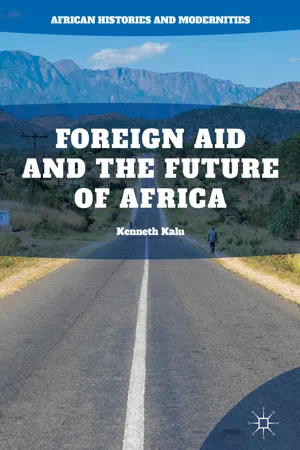The United Nations is obviously right to call for increased action from international forces to “cut world poverty by half”. However, the action envisaged by the United Nations cannot achieve the result of cutting poverty by half – at least, in Africa’s developing countries . By calling on the industrialized nations to increase their aid budgets to 0.7% of gross national product, the United Nations is working on the belief that more funds sent to African states could procure growth and development and help reduce poverty levels in these countries. It is our considered view that such an assumption is grossly misleading because subsisting evidence shows that a lack of financial or human resources is not the cause of Africa’s poverty and underdevelopment . Throughout this book, our aim is to highlight the real causes of poverty and underdevelopment in Africa, and to show that foreign aid – defined as the gift of cash and material resources to Africa – cannot, and indeed does not have the capacity to reduce poverty levels , and cannot produce sustainable growth and development in Africa. Consequently, we argue that the need for more aid as canvassed by the United Nations and the global aid industry is wrong-headed if the overall aim is to curb the poverty levels in Africa.We have the opportunity in the coming decade to cut world poverty by half. Billions more people could enjoy the fruits of the global economy . Tens of millions of lives can be saved. The practical solutions exist. The political framework is established. And for the first time, the cost is utterly affordable. Whatever one’s motivation for attacking the crisis of extreme poverty – human rights , religious values, security, fiscal prudence, ideology – the solutions are the same. All that is needed is action.9

- English
- ePUB (mobile friendly)
- Available on iOS & Android
Foreign Aid and the Future of Africa
About this book
During the past five decades, sub-Saharan Africa has received more foreign aid than has any other region of the world, and yet poverty remains endemic throughout the region. As Kenneth Kalu argues, this does not mean that foreign aid has failed; rather, it means that foreign aid in its current form does not have the capacity to procure development or eradicate poverty. This is because since colonialism, the average African state has remained an instrument of exploitation, and economic and political institutions continue to block a majority of citizens from meaningful participation in the economy. Drawing upon case studies of Angola, Cameroon, Chad, Equatorial Guinea, Democratic Republic of the Congo, and Nigeria, this book makes the case for redesigning development assistance in order to strike at the root of poverty and transform the African state and its institutions into agents of development.
Frequently asked questions
- Essential is ideal for learners and professionals who enjoy exploring a wide range of subjects. Access the Essential Library with 800,000+ trusted titles and best-sellers across business, personal growth, and the humanities. Includes unlimited reading time and Standard Read Aloud voice.
- Complete: Perfect for advanced learners and researchers needing full, unrestricted access. Unlock 1.4M+ books across hundreds of subjects, including academic and specialized titles. The Complete Plan also includes advanced features like Premium Read Aloud and Research Assistant.
Please note we cannot support devices running on iOS 13 and Android 7 or earlier. Learn more about using the app.
Information
1. Introduction: Foreign Aid and Poverty in Africa
Table of contents
- Cover
- Front Matter
- 1. Introduction: Foreign Aid and Poverty in Africa
- 2. The Postcolonial African State Revisited
- 3. Africa in the Global Community
- 4. The Structure of Foreign Aid to Africa Since the 1960s
- 5. Foreign Aid to Africa: How Far and How Well?
- 6. Targeting the Fundamentals: Towards a New Form of Development Assistance to Africa
- 7. Development Assistance Redesigned
- 8. The State and Economic Development
- 9. Explaining Africa’s Underdevelopment
- 10. Conclusion
- Back Matter